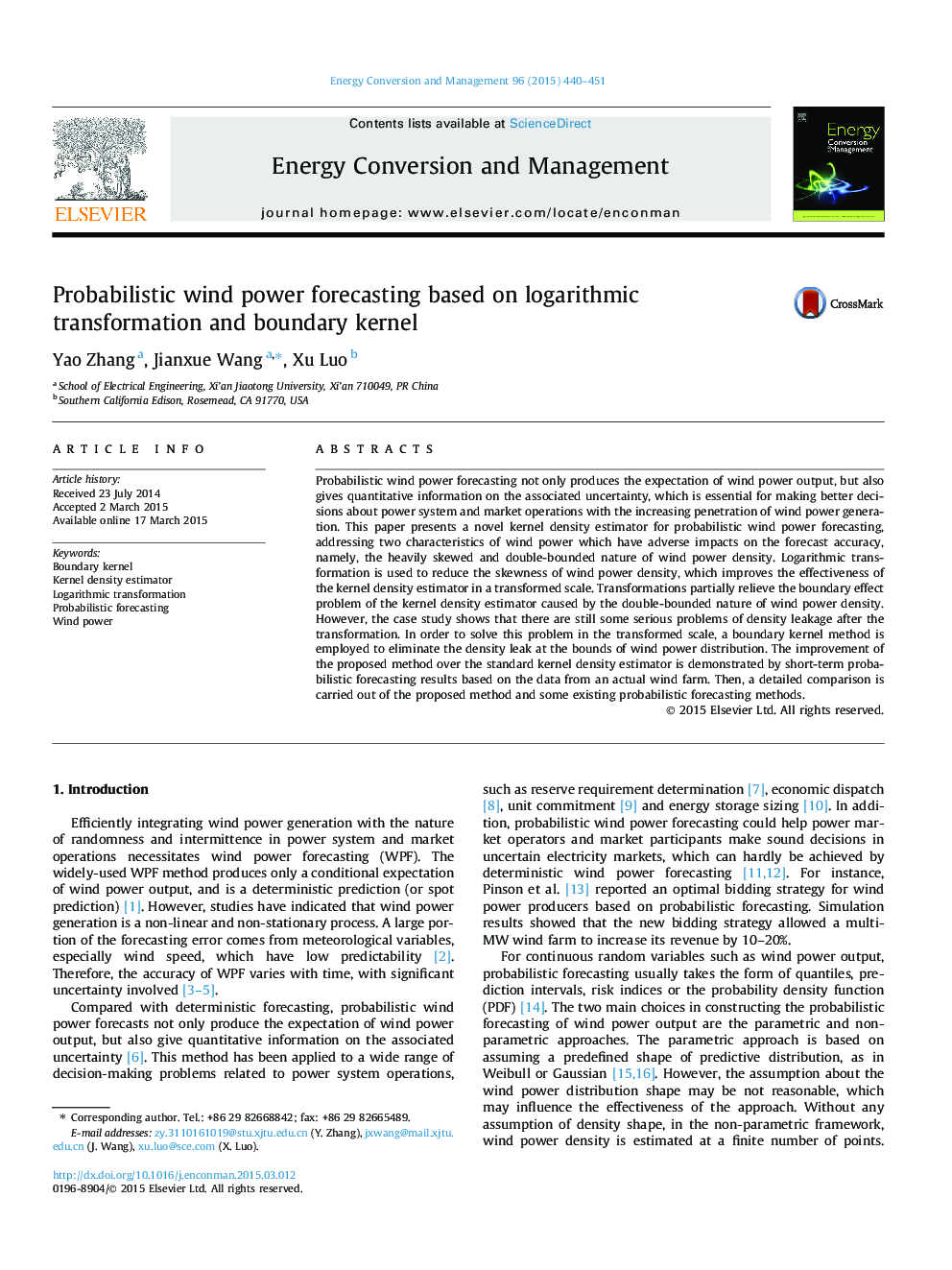| Article ID | Journal | Published Year | Pages | File Type |
|---|---|---|---|---|
| 763588 | Energy Conversion and Management | 2015 | 12 Pages |
•Quantitative information on the uncertainty of wind power generation.•Kernel density estimator provides non-Gaussian predictive distributions.•Logarithmic transformation reduces the skewness of wind power density.•Boundary kernel method eliminates the density leakage near the boundary.
sProbabilistic wind power forecasting not only produces the expectation of wind power output, but also gives quantitative information on the associated uncertainty, which is essential for making better decisions about power system and market operations with the increasing penetration of wind power generation. This paper presents a novel kernel density estimator for probabilistic wind power forecasting, addressing two characteristics of wind power which have adverse impacts on the forecast accuracy, namely, the heavily skewed and double-bounded nature of wind power density. Logarithmic transformation is used to reduce the skewness of wind power density, which improves the effectiveness of the kernel density estimator in a transformed scale. Transformations partially relieve the boundary effect problem of the kernel density estimator caused by the double-bounded nature of wind power density. However, the case study shows that there are still some serious problems of density leakage after the transformation. In order to solve this problem in the transformed scale, a boundary kernel method is employed to eliminate the density leak at the bounds of wind power distribution. The improvement of the proposed method over the standard kernel density estimator is demonstrated by short-term probabilistic forecasting results based on the data from an actual wind farm. Then, a detailed comparison is carried out of the proposed method and some existing probabilistic forecasting methods.
